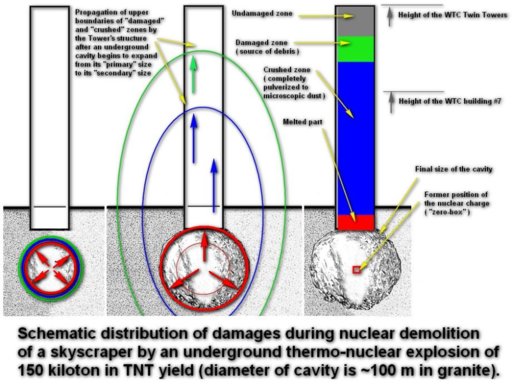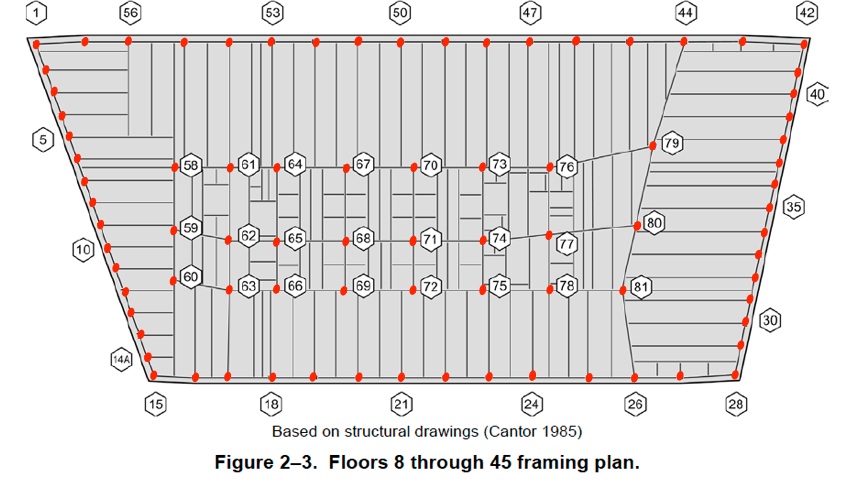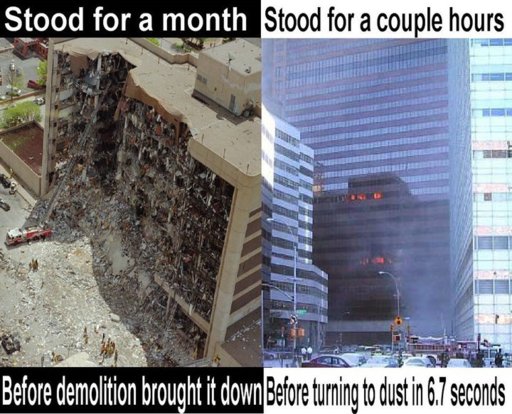The following is a parody:
It is plainly understood that free-fall of a building can only be achieved if there is no structural resistance. WTC7 was observed to fall straight down at free fall speeds. This is only possible if all the columns on every floor were simultaneously cut. Any uncut column would provided resistance and hence free fall would have been possible.
Furthermore, every columns would have to be cut on every floor, because if the columns we just cut at the base, then when the next floor hit the ground, it would offer resistance, and a noticeable jolt. Since the columns are designed to carry more than the weight of the building, they would have instantly arrested the downward motion of the building.
However this is clearly not the case, as in all images and video the falling WTC7, the exterior is entirely undamaged. Since the exterior contains half the columns, this would mean that the building would fall at at the very most half free-fall speed, which it clearly did not.
Hence explosives could not have been used directly on the columns, and could not have cause WTC7 to fall.
Since the exterior is undamaged as it falls, the only possible explanation is that a large hole was secretly dug below WTC7 in the months below the attack. After the collapse of WTC1, the cover of the hole was gradually removed by a series of small explosions, or possibly some other method, until WTC7 suddenly fell straight down into the hole.
The slight slowing of WTC7 as the roofline approached the ground is explained by a tapering of the base of the hole.
It is plainly understood that free-fall of a building can only be achieved if there is no structural resistance. WTC7 was observed to fall straight down at free fall speeds. This is only possible if all the columns on every floor were simultaneously cut. Any uncut column would provided resistance and hence free fall would have been possible.
Furthermore, every columns would have to be cut on every floor, because if the columns we just cut at the base, then when the next floor hit the ground, it would offer resistance, and a noticeable jolt. Since the columns are designed to carry more than the weight of the building, they would have instantly arrested the downward motion of the building.
However this is clearly not the case, as in all images and video the falling WTC7, the exterior is entirely undamaged. Since the exterior contains half the columns, this would mean that the building would fall at at the very most half free-fall speed, which it clearly did not.
Hence explosives could not have been used directly on the columns, and could not have cause WTC7 to fall.
Since the exterior is undamaged as it falls, the only possible explanation is that a large hole was secretly dug below WTC7 in the months below the attack. After the collapse of WTC1, the cover of the hole was gradually removed by a series of small explosions, or possibly some other method, until WTC7 suddenly fell straight down into the hole.
The slight slowing of WTC7 as the roofline approached the ground is explained by a tapering of the base of the hole.




